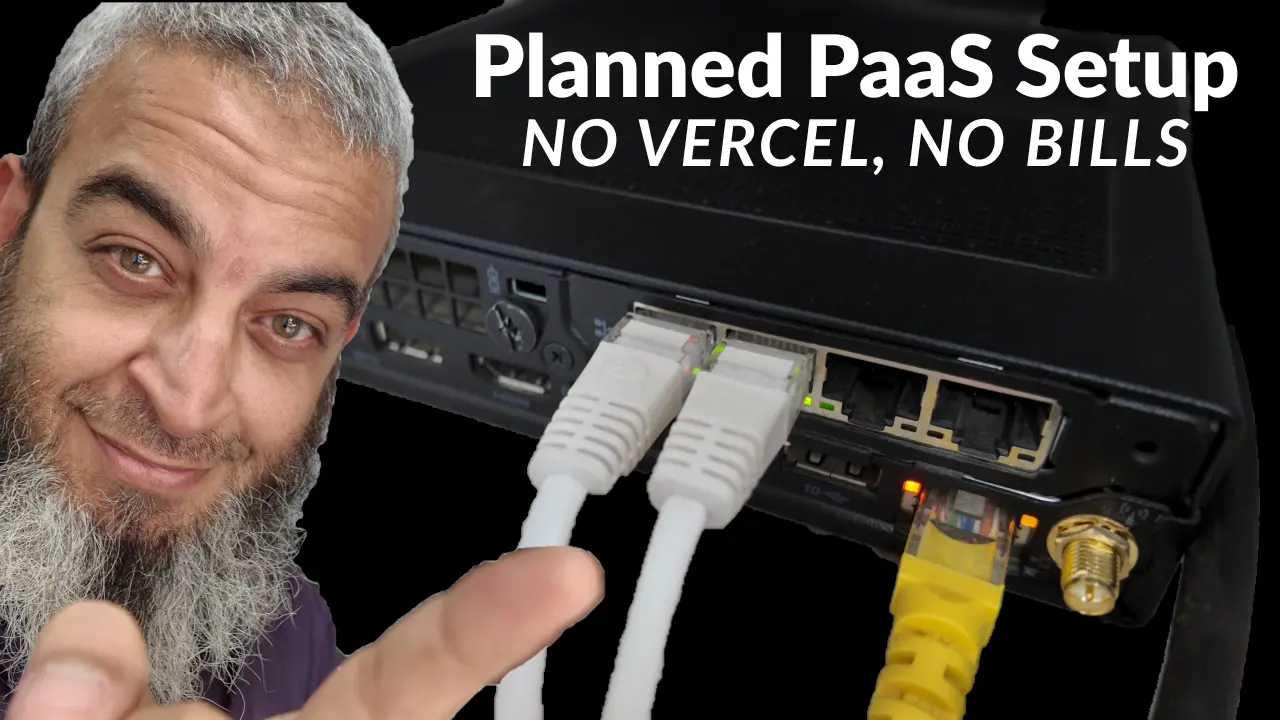🧭 Purpose
This document outlines the current state, design decisions, and action plan for my personal developer infrastructure.
The motivation for self-hosting arises from the unpredictable costs of Vercel, Netlify, Supabase, and other cloud PaaS services — which can scale suddenly without providing long-term control. Since my current hardware (a high-spec ThinkStation P3 Tiny) outperforms most entry-level VPS offerings, this infrastructure gives me both cost savings and performance headroom.
In the future, I may even scale this setup to offer private cloud services to selected clients.
🖥️ Host System Overview
Device: Lenovo ThinkStation P3 Tiny
Model: 30H1CTO1WW
CPU: Intel Core i5-14600 (20 threads)
RAM: 16GB DDR5
Storage: 1TB NVMe PCIe Gen4 SSD
NICs:
- Integrated Ethernet
- Intel I350-T4 Quad Port Gigabit Server Adapter
Proxmox VE installed with ext4 (not ZFS for RAM efficiency).
🧩 Virtual Machine Layout
| VM Name | vCPU | RAM | Disk | Role | Notes |
|---|---|---|---|---|---|
| pfSense | 2 | 2GB | 32GB | Firewall / Router | Always on |
| Ubuntu Server | 4 | 12GB | 100GB root + 647GB /data | Web App Dev Server | Always on |
| PBS | 2 | 4GB | 16GB boot + 104GB backup | Backup Server | Only powered on during manual backups |
💽 Storage Strategy
The Ubuntu VM has two logical volumes:
| Mount Point | Size | Usage | Purpose |
|---|---|---|---|
/ | 100GB | ~8GB | OS, Docker, Coolify, tools |
/data | 647GB | ~1.2GB | App volumes, DB data, digital assets |
/data Folder Structure
Organized for both app and media usage:
/data/
├── content/ # YouTube videos, thumbnails, images
├── docker/ # Docker volume storage
├── postgres/ # PostgreSQL data
├── redis/ # Redis data
├── backups/ # (Optional) app backups or exports
This shared-use model avoids the risk of filling root (/) and provides easy separation of concerns.
🧠 Memory Plan
- Ubuntu VM receives 12GB RAM
- Remaining RAM reserved for pfSense and occasional PBS usage
- Plan to upgrade to 32GB in the future for expanded services and smoother multitasking
🧮 CPU Plan
- Ubuntu VM currently allocated 4 vCPUs
- Can be increased to 6–8 vCPUs as app workload grows
- Ensure pfSense (2 vCPUs) always has headroom for reliable routing
🐳 Docker Setup
Docker’s default storage location will be moved to /data/docker for safety and scalability.
Docker Config (/etc/docker/daemon.json)
{
"data-root": "/data/docker"
}
This avoids bloat in / and aligns all app-related data under /data.
🗃️ Database Hosting
For now, PostgreSQL and Redis will run inside the Ubuntu VM using Docker, with their volumes mapped to:
/data/postgres/
└── db data, configs, backups
/data/redis/
└── cache and session storage
In the future, they can be moved to their own VMs if scaling requires isolation.
🔁 Backup Strategy
Proxmox Backup Server (PBS)
- Back up only the root (
/) disk (100GB) - Exclude the large
/datadisk from PBS (to reduce backup size and avoid media bloat) - Manual backups will be taken after milestones or major app deployments
Offsite Backup for /data
- Use
rcloneto sync/data/contentand other folders to OneDrive (~930GB available) - Consider scripting and scheduling regular syncs in the future
🔧 Swap Behavior
Ubuntu VM uses default swapfile behavior. No custom changes are made for now. Swap is left enabled to support memory burst protection in limited RAM conditions.
✅ Action Plan
| Area | Action |
|---|---|
| RAM | Allocate 12GB to Ubuntu VM |
| CPU | Scale Ubuntu VM to 6–8 vCPUs as needed |
| Docker | Move Docker volumes to /data/docker |
| PBS | Set up root-only backups for Ubuntu VM |
/data | Organize folders for DB, Docker, and media content |
| rclone | Set up periodic sync of /data/content to OneDrive |
| Backups | Perform PBS backups manually after important changes |
| Future RAM | Upgrade to 32GB when budget allows |
| Database | Run Postgres & Redis in Ubuntu VM via Docker for now |
| Monitoring | Planned for later (Netdata, Glances, etc.) |
| Security | To be handled in a separate security-focused doc |
| Cloudflare | Tunnel setup will be documented separately |
📌 Notes
- This setup balances performance, flexibility, and cost-efficiency.
- PBS will remain manual until automation is required.
- Coolify will be the primary PaaS layer for Next.js apps.
- When needed, additional VMs (databases, testing) can be spun up on-demand.
🔮 Final Thought
This setup is designed to enable app development, hosting, and digital asset management on a stable, powerful local system — avoiding cloud vendor surprises while laying the groundwork for future scaling, client hosting, or even a private cloud offering.
